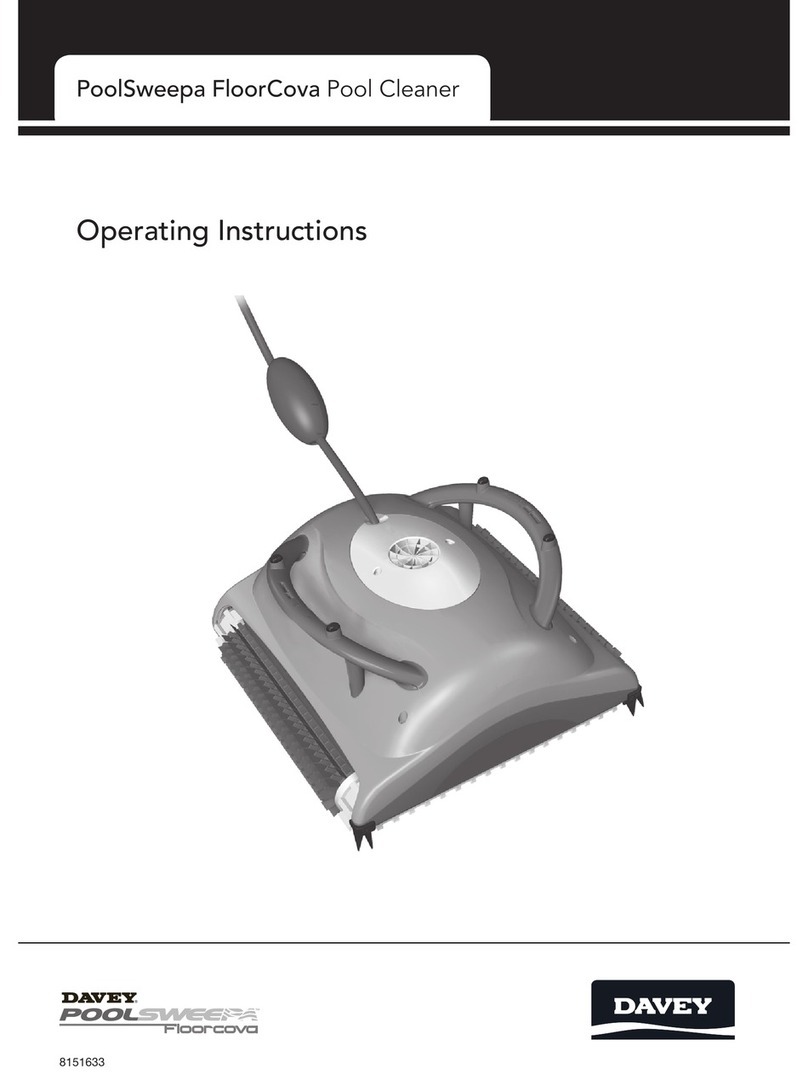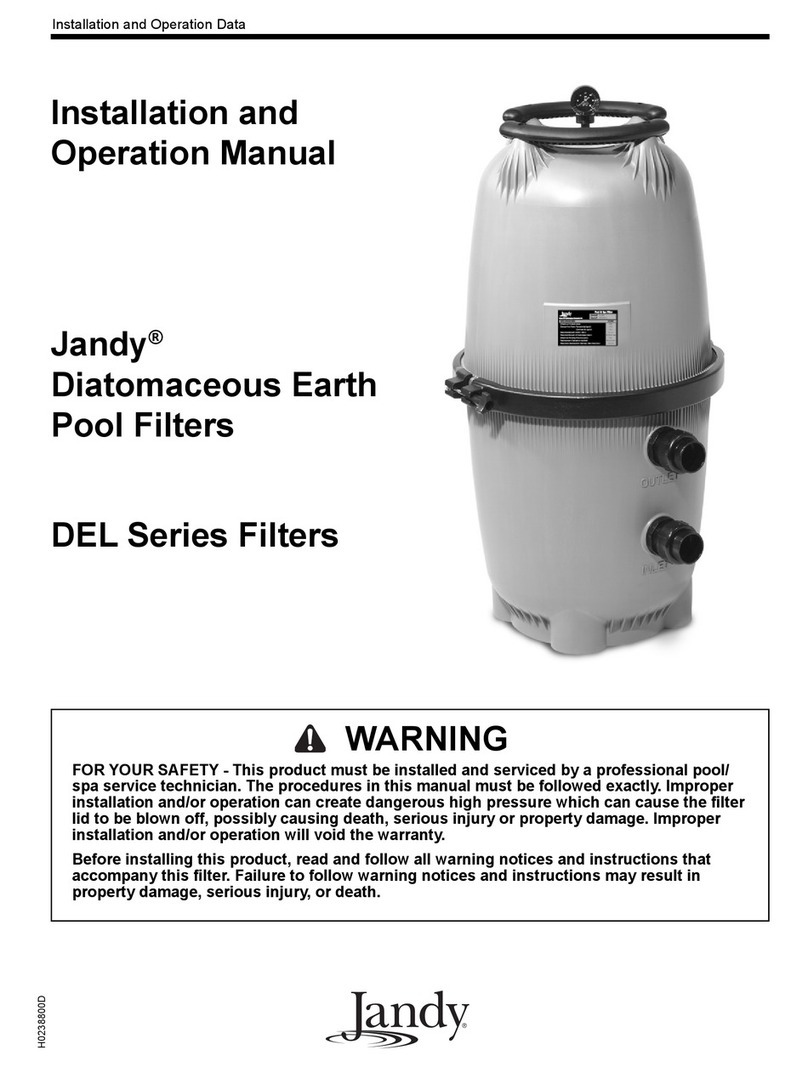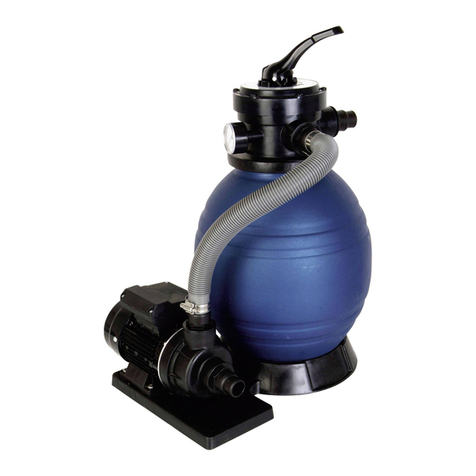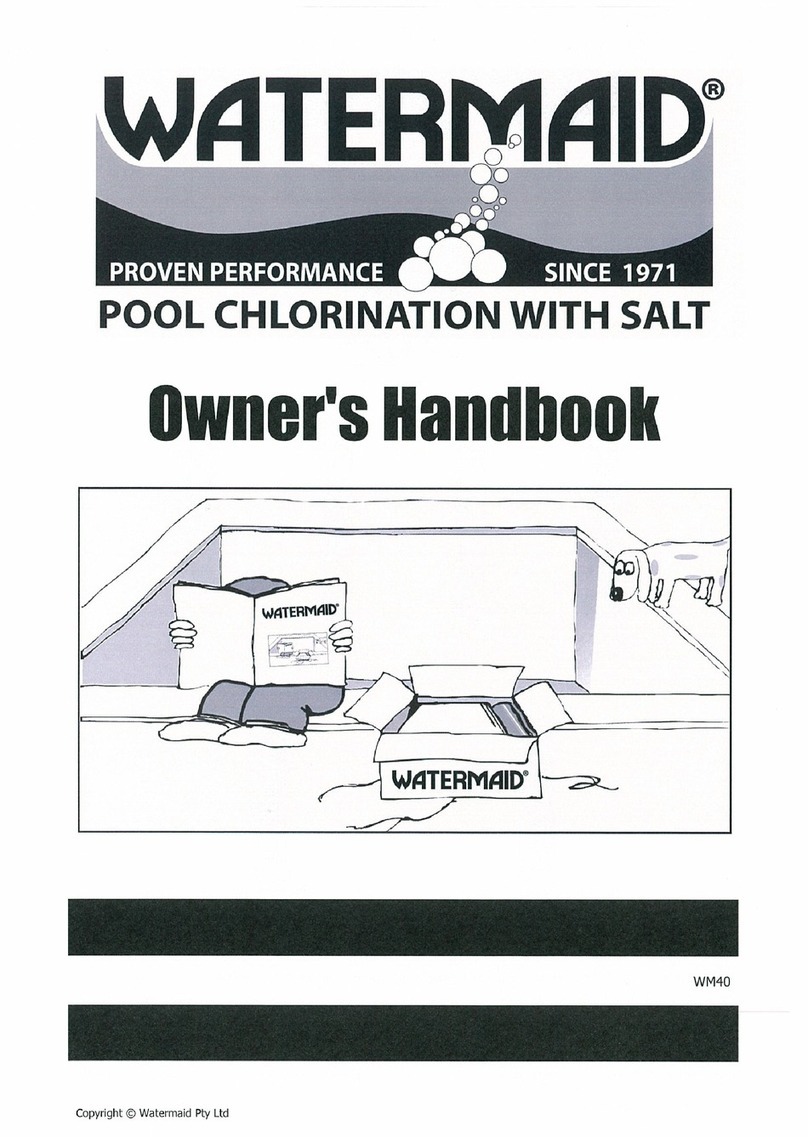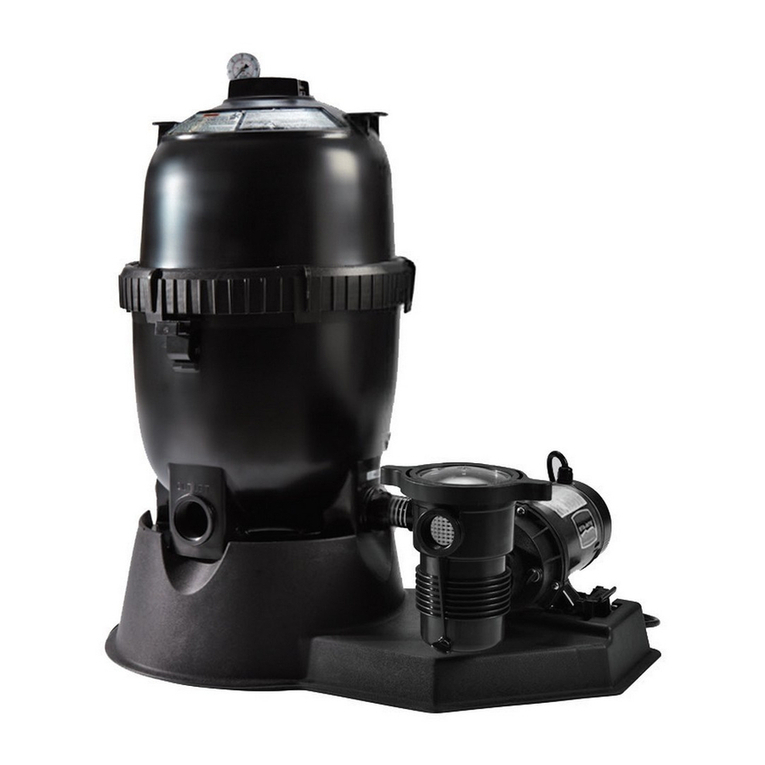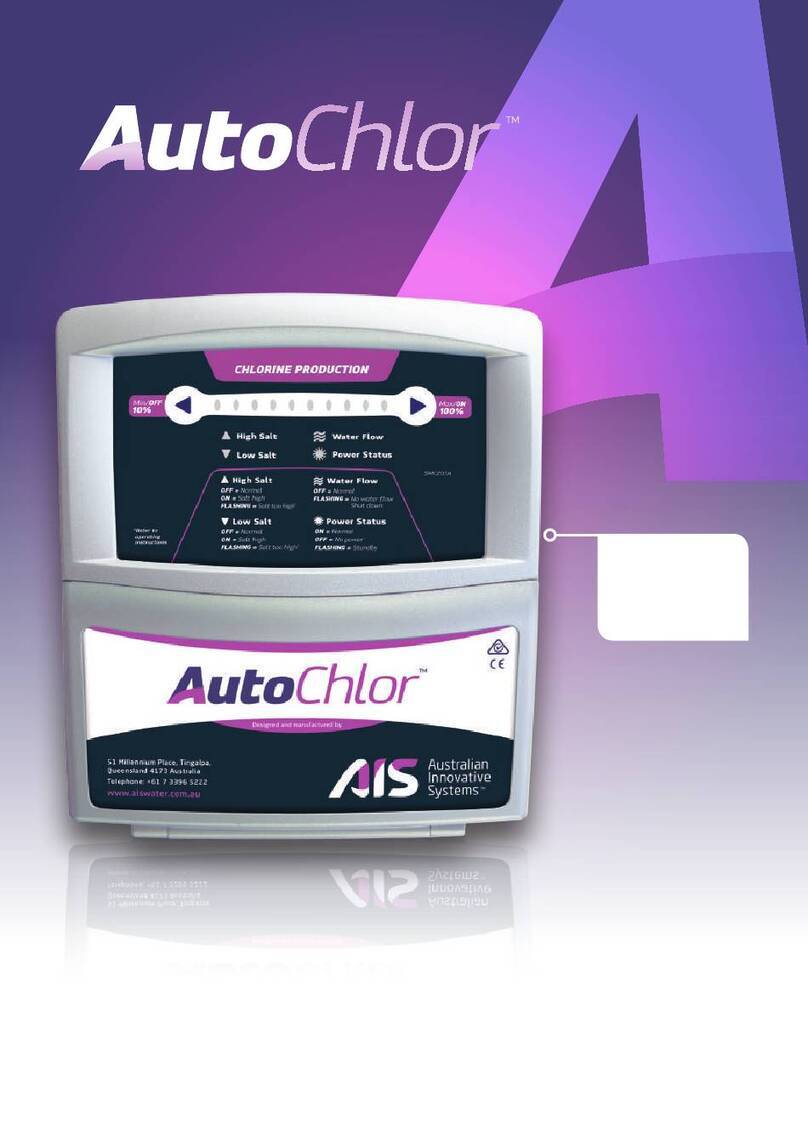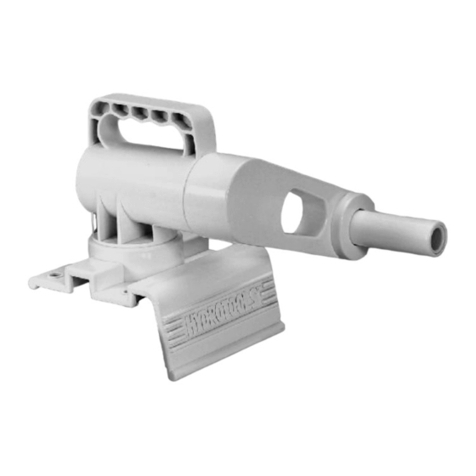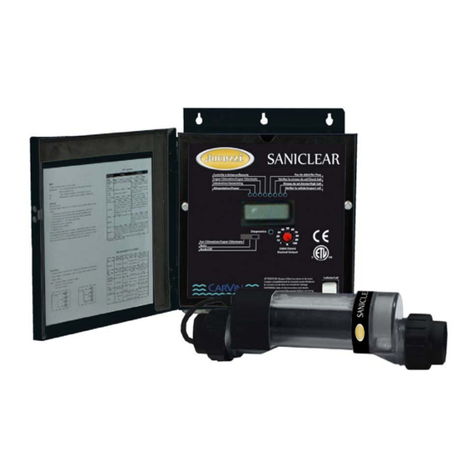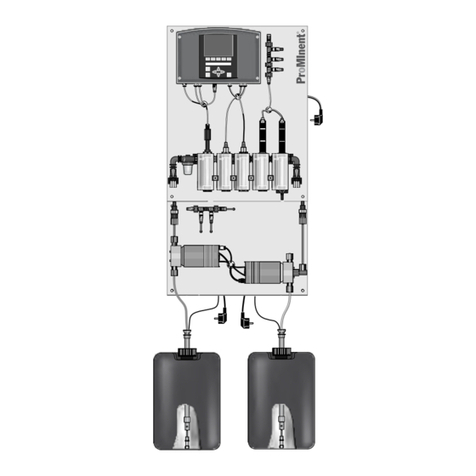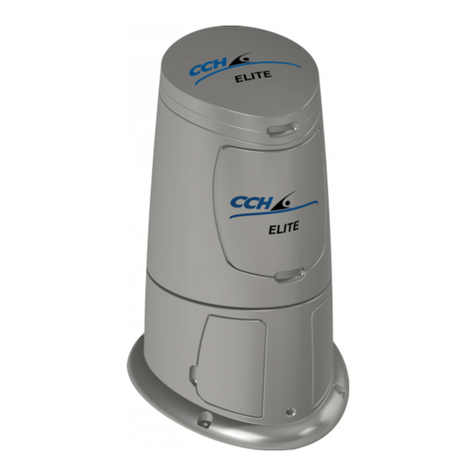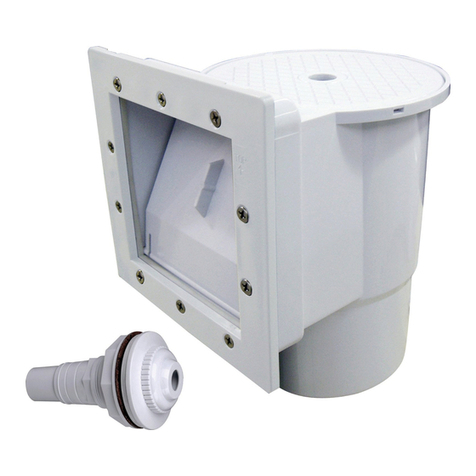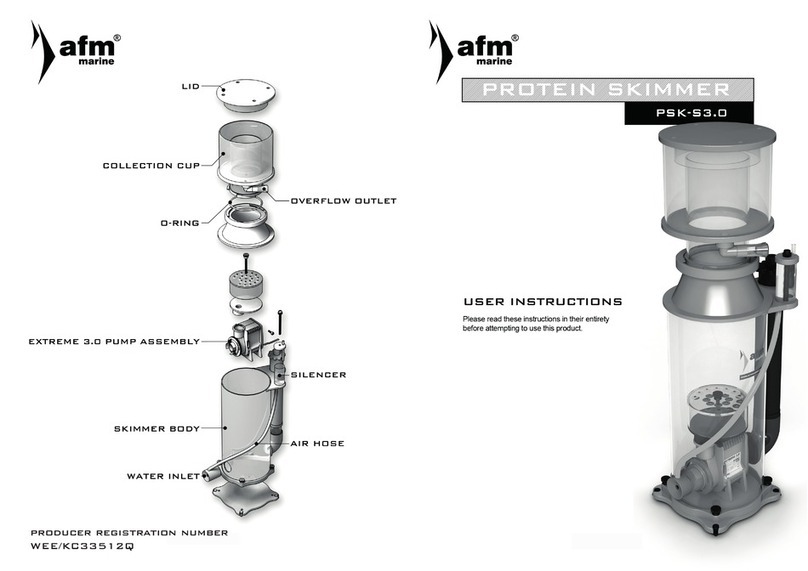RAISING THE SALINITY (TDS) OF A NEW POOL
Calculate the water volume of your pool as follows: average length x average width
x average depth in metres. Multiply this answer by 2.5. The answer is the amount of
minerals in kilograms you need to add to increase the salinity of your pool from fresh
water to 2500 ppm (the recommended TDS level for this chlorine generator).
Mineral water pool owners typically prefer Magnesium Chloride (MgCl) as the primary
mineral added to raise the TDS in their pools. This chlorine generator is also compatible
with traditional Sodium Chloride (rened NaCl). Consult your local pool professional to
select the right minerals for your pool.
Add the calculated quantity of minerals to the shallow end of the pool. Brush the
minerals into the pool to assist them in dissolving. Undissolved minerals may stain
your pool’s nish.
Turn on the power to the chlorine generator and press “Min/O ” button to erase all
the green production lights. This will turn the chlorine generator production o and
leave the pump running.
Your chlorine generator is designed to maintain a sanitizing chlorine level in your pool.
It will take a number of days of continuous running to reach this level. Have the water
chlorine level tested daily until it reaches 1.5 – 2.0 ppm. At this point you can adjust the
running time and production level to suit your requirements.
The most eective method of chlorinating your pool is to run the pump long enough
to pass all the pool water through the lter/chlorine generator’s cell at least once a day.
If your chlorine generator does not produce enough chlorine, increase the running time.
Chlorine demand and running time will vary and depends on a number of factors such as:
bather load, chemical balance, water temperature, sunlight exposure, type of ltration
media, etc.
Check the water chemical balance (page 13). A correct chemical balance
and chlorine level will ensure optimum pool water quality.
For example, Pool size = 60,000 ltrs; Pump ow = 200 ltrs/min.
Pool size / (pump ow x 60 mins) = 5 hours to lter the water once.

